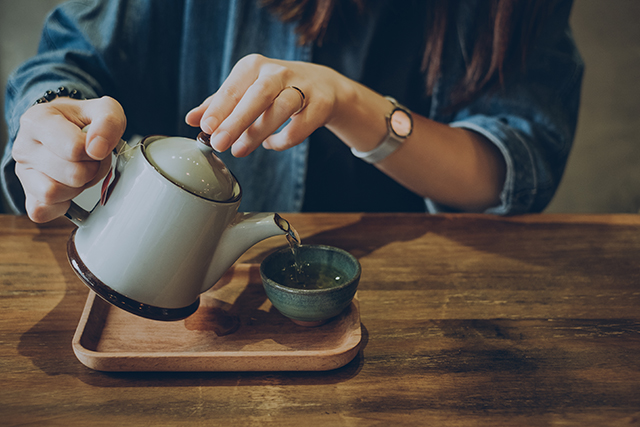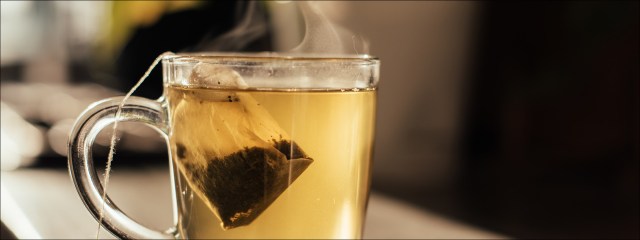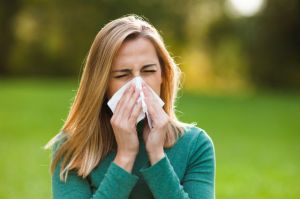After water, tea is the second most consumed drink in the world, according to Statista. What’s more, a freshly brewed cup of tea can also pose some health benefits.
Whether you’re an avid tea drinker or just an occasional sipper, there are a wide variety of teas to explore.
Check out our guide to teas and their health benefits.
What Is Tea?
Tea comes from a subtropical, evergreen plant called Camellia sinensis, according to TeaClass by online gourmet tea retailer Adagio Teas. Camellia sinensis is native to Asia, but it is also grown in places across the globe today.
How the plant’s leaves are processed determines if it becomes black, green, oolong or white tea. Before ending up in your cup, tea leaves are generally picked and withered before being rolled. The leaves are then oxidized to varying degrees, which affects the flavor and sometimes the nutritional benefits, before finally being dried.
And though you may not need a guide to tea to tell you, it’s made into a beverage by pouring hot water over the dried buds, flowers and/or leaves of the tea plant and allowing them to steep for a specific amount of time.
The Health Benefits of Tea
“Tea contains substances linked to a lower risk for heart disease, cancer and diabetes,” according to Harvard Health Publishing. “The main health-promoting substances in tea are polyphenols, in particular catechins and epicatechins. Lab and animal studies say these molecules have anti-inflammatory and antioxidant properties. Harvard-led studies of large groups of people over time have found that tea or coffee drinkers are at lower risk for diabetes and possibly cardiovascular disease.”
Brewed tea is also low in calorie and good source of naturally occurring caffeine. Some research suggests caffeine can help prevent cognitive decline.
Guide to Tea: Varieties
You can choose your perfect cup of tea based on several factors, like flavor profile, aroma, caffeine content and more.
Darker teas typically have higher amounts of caffeine and bolder flavors compared to lighter ones. However, letting any tea steep longer will result in more flavor and caffeine to be released. Follow steeping instructions on packaging and add or subtract a minute or two to better suit your preference.
Black Tea
One if the stronger types of tea when it comes to flavor, steeped black teas can be a dark brown or reddish-brown color.
Black tea varieties include English and Irish breakfast, Earl Grey and chai. A cup of black tea typically has about 47 milligrams of caffeine – higher than a majority of other teas but generally less than a cup of coffee.
Some black teas can taste a bit astringent, which is why adding a splash of milk or a sweetener is common.
Green Tea
Fresh leaves are steamed or pan-fired in order to make green tea, according to TeaClass. Green tea is usually a pale green or yellow-green hue. Green teas can vary in flavor, tasting anything from fresh, grassy, earthy, toasty or smoky. A cup of green tea contains about 28 milligrams of caffeine.
Pro tip: You don’t want to over-steep green tea, as it can become bitter.
Matcha is a type of Japanese green tea made from powdered tea leaves. It has high levels of antioxidants and proponents claim it’s an especially healthy form of green tea.

White Tea
The least processed type of tea, white tea is also one of the most mild and delicate in flavor and aroma.
When steeped, white tea is often very pale green or yellow in color. White peony is one of the more popular types of white tea.
White tea has similar caffeine levels to green tea.
Oolong Tea
Oolong is a traditional Chinese tea. It is also one of the most time-consuming teas to create, according to TeaClass, since it requires repeated rolling and oxidization.
Somewhat of a mix between black and green tea, Oolang is known for being smooth. Notable richness and a floral or fruity taste are also common.
“A cup of brewed oolong tea contains small amounts of calcium, magnesium and potassium,” according to Healthline. “It also contains about 38 milligrams of caffeine.”
Pu-erh Tea
Another type of traditional Chinese tea, pu-erh is fermented.
“Depending on the type of pu’erh being made (either dark ‘ripe’ pu’erh or green ‘raw’ pu’erh), the aging process lasts anywhere from a few months to several years,” according to TeaClass.
Pu-erh tea usually comes as loose leaves or pressed shapes. This type of tea can have anywhere from 30 to 100 milligrams of caffeine, depending on the age.
Herbal Teas
Herbal teas are not made from the Camellia sinensis plant, but from dried herbs, flowers, fruits or spices.
Some popular herbal teas and their medicinal associations include:
Chamomile – sleep aid
Rooibos – anti-inflammatory
Echinacea – immune support
Ginger – nausea relief
Peppermint – digestion aid
Rosehip – vitamin C
Sage – brain health
Making Tea
There’s nothing like curling up with a warm mug of tea on a crisp morning, afternoon or evening. Discover your perfect cup of tea by trying different varieties and making them your own. Sweeteners like honey, sugar or agave nectar can help cut the acidity of certain brews.
Did you find this guide to tea helpful? If you are looking for more healthy beverages, you may also like our guide to nondairy milks.
Are you a tea drinker? Tell us your favorite kind of tea in the comments.
11 Thoughts on “Tea Time! A Guide to Teas and Their Health Benefits”
Leave A Comment
Comments are subject to moderation and may or may not be published at the editor’s discretion. Only comments that are relevant to the article and add value to the Your AAA community will be considered. Comments may be edited for clarity and length.

















My favorite teas are green tea, English breakfast, and soursop.
Love Earl Grey and Oolong I been trying a blend of Peach Ginger Peppermint Very relxing at the end of the day
My new favorite is Raspberry tea. Don’t need to add sugar or milk.
My favorite is Matcha. Earl Grey and Oolong in afternoons.
Dragonfruit is a favorite but hard to find.
Very informative
I am a black tea drinker with a splash of milk. I drink about 3+ mugs a day. I am not a not a coffee drinker.
pravinkuma
Love tea drinking. Morning starts with 2 cups of hot Irish breakfast with sweetener and milk; I then sip on iced green tea, lightly sweetened for the balance of the day.
My favorite tea is green tea. I always put a teaspoonful honey in it. It’s good for dry throat and especially when the weather get colder.
Rooibos (red) tea…African Honeybush is my fav